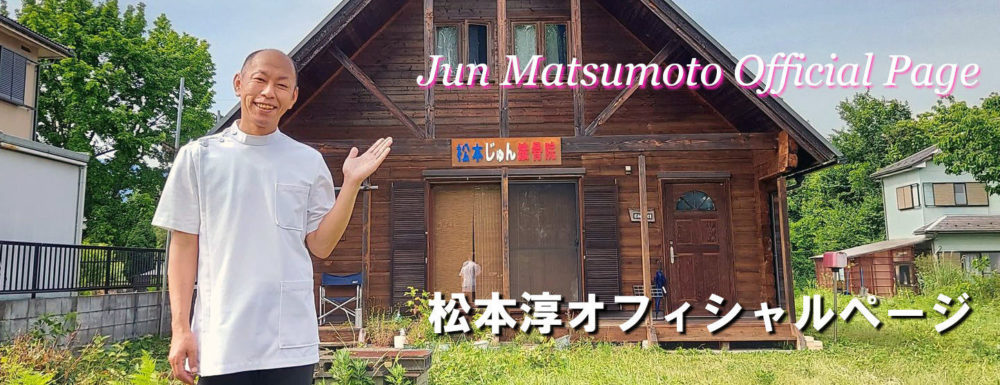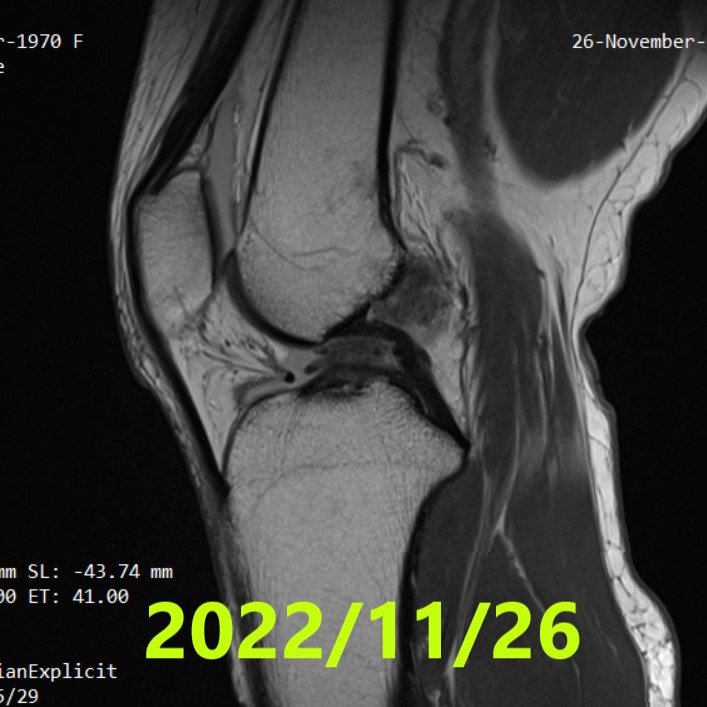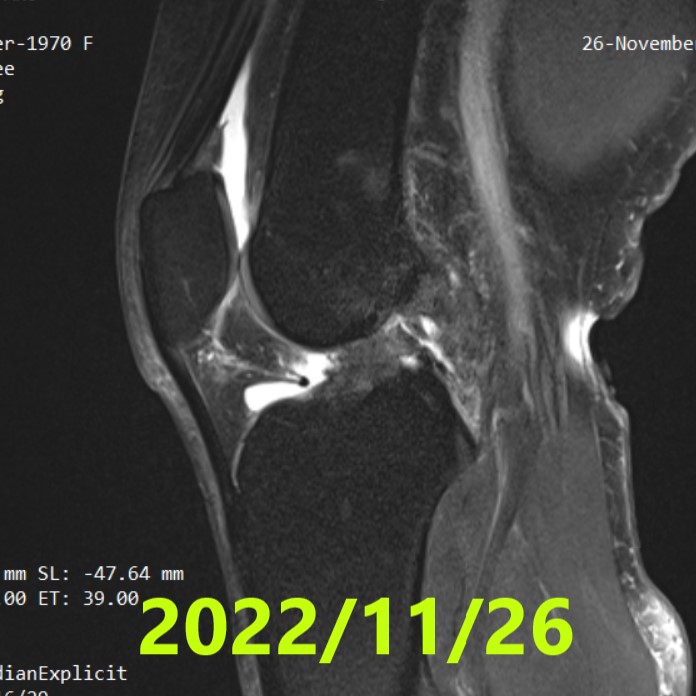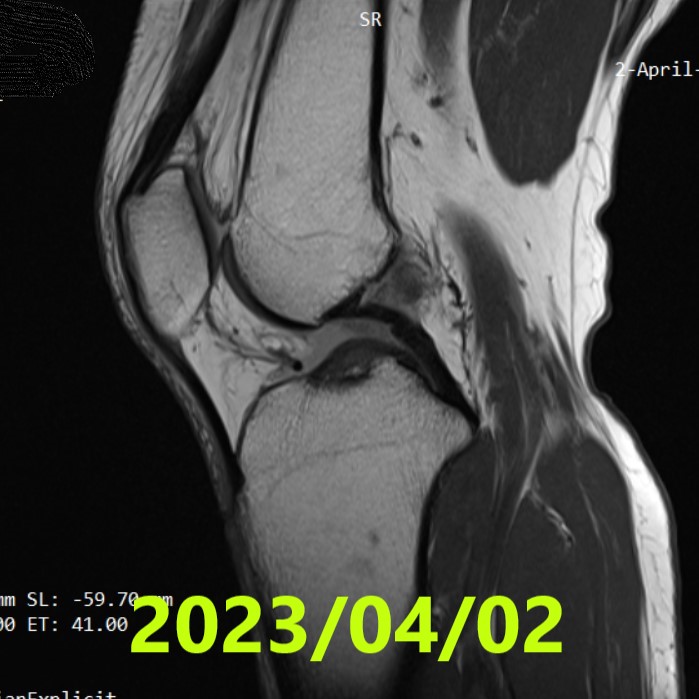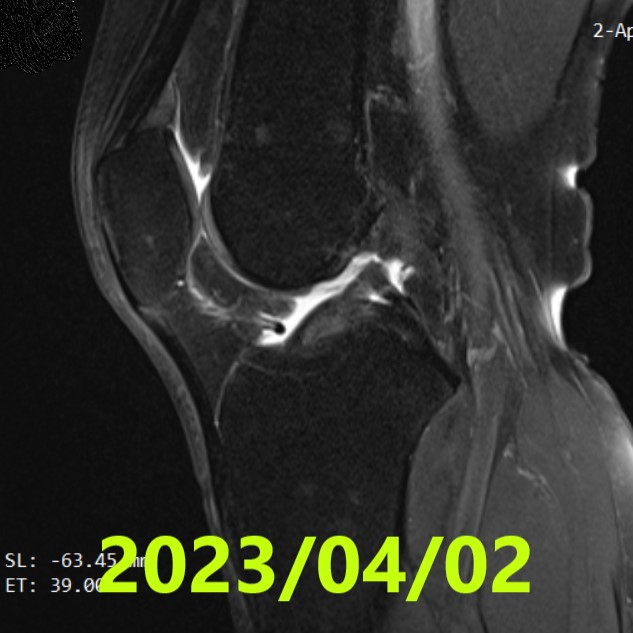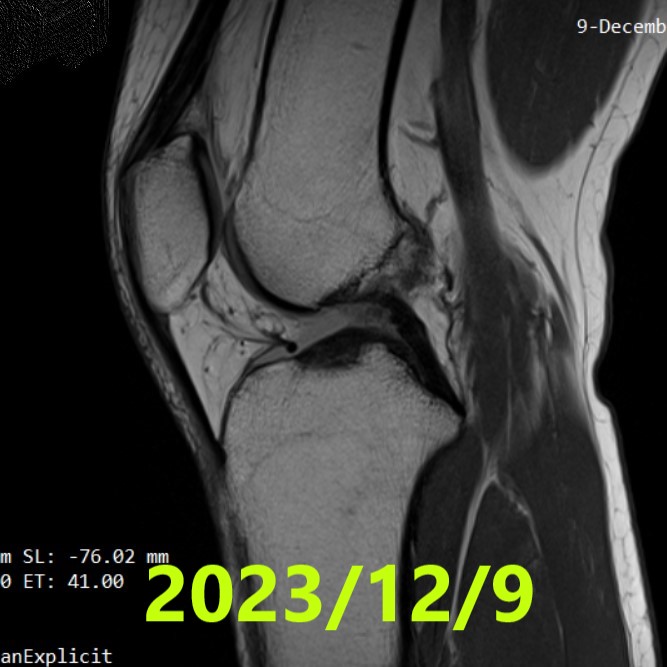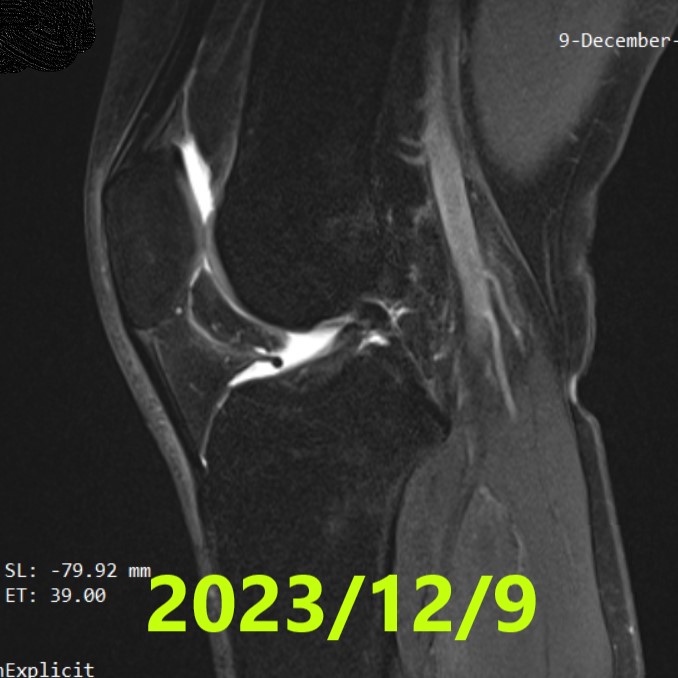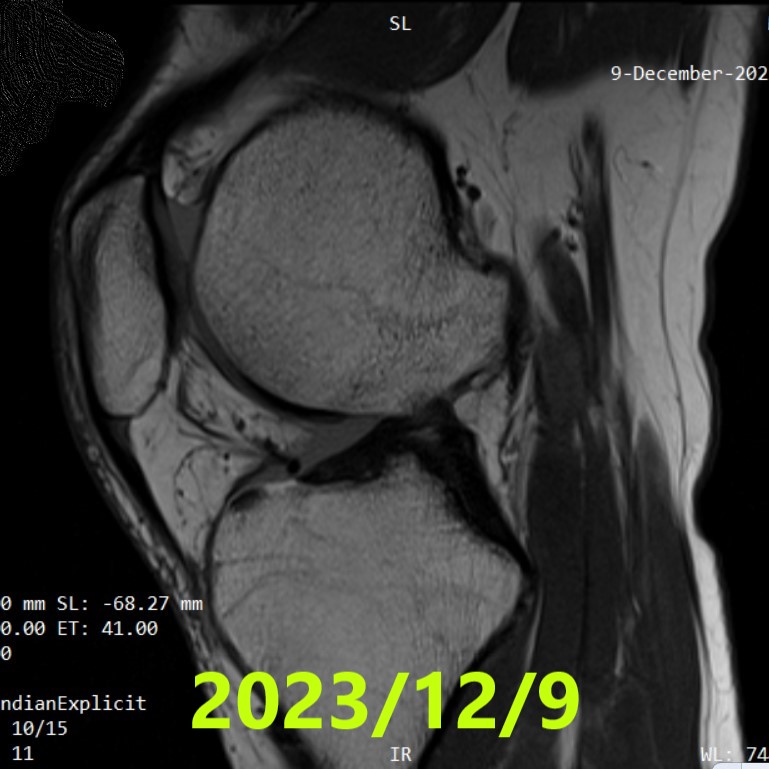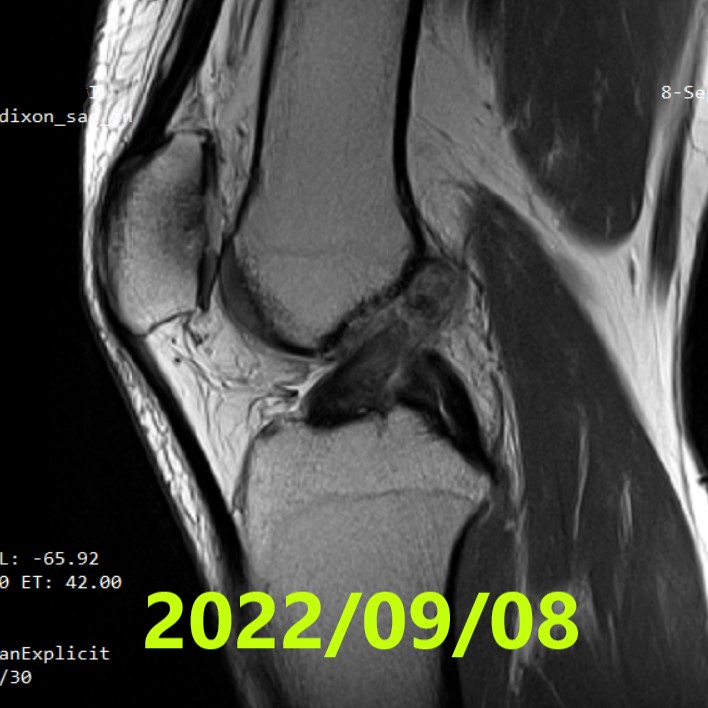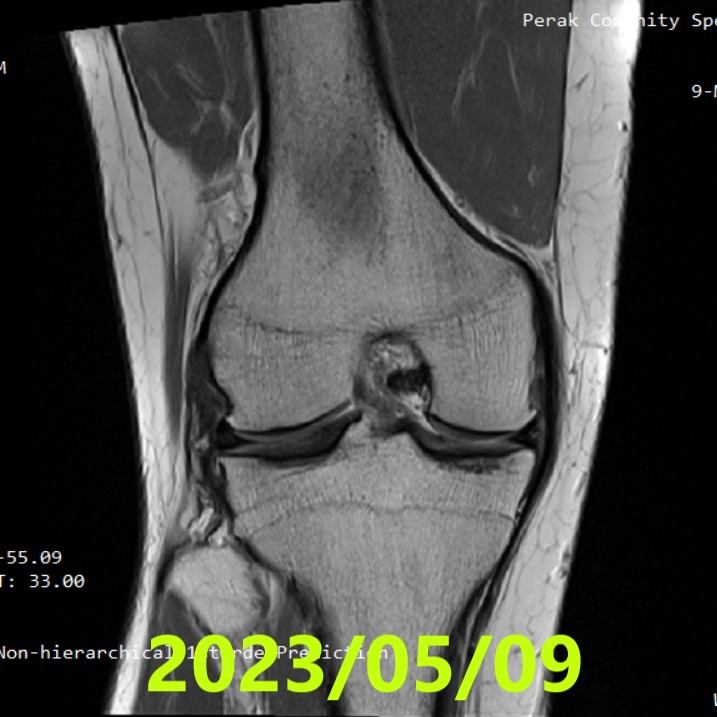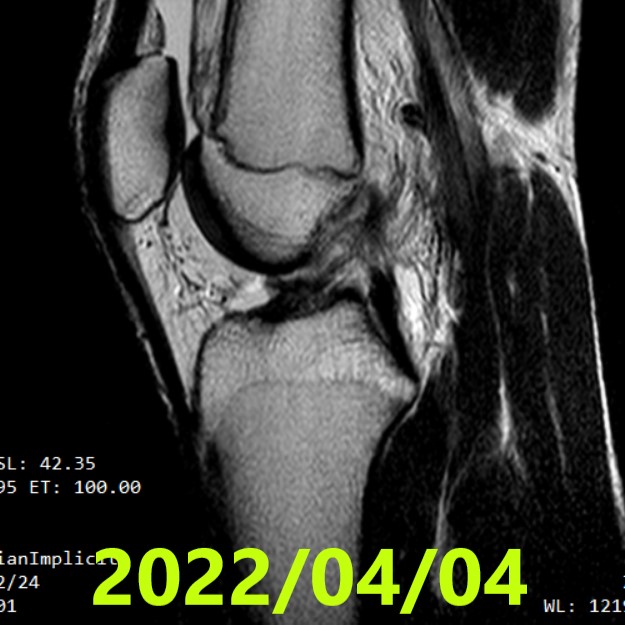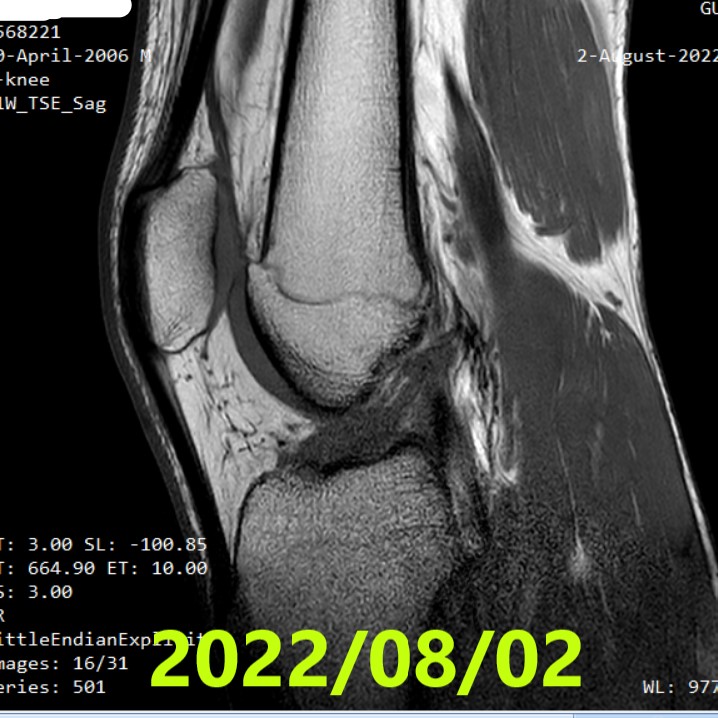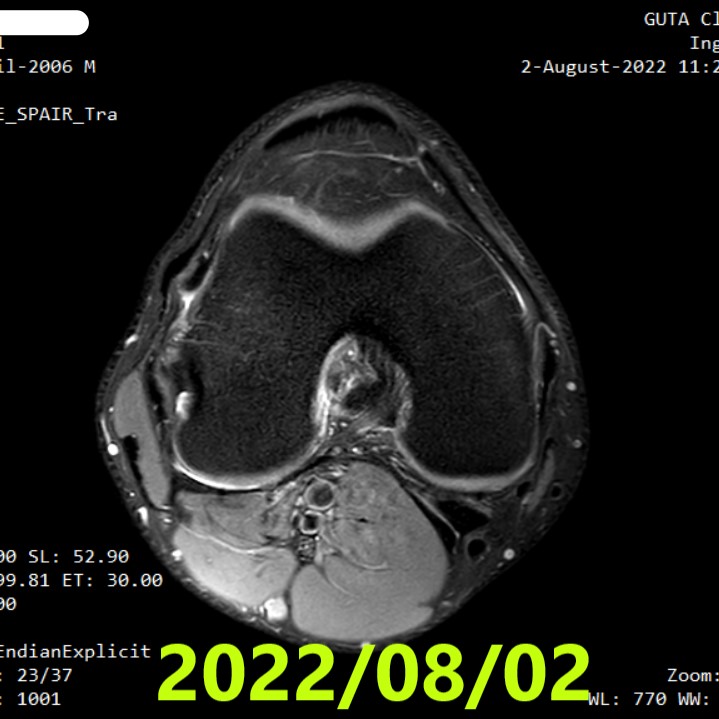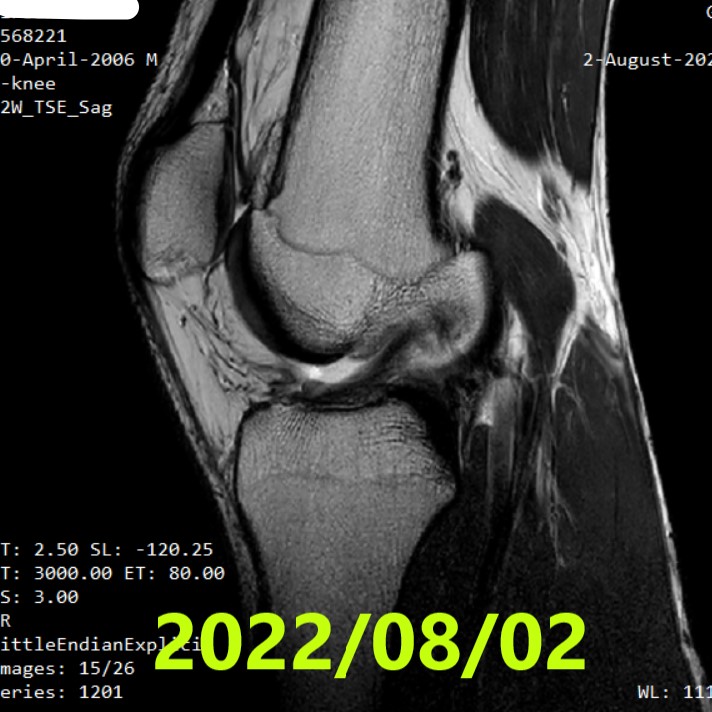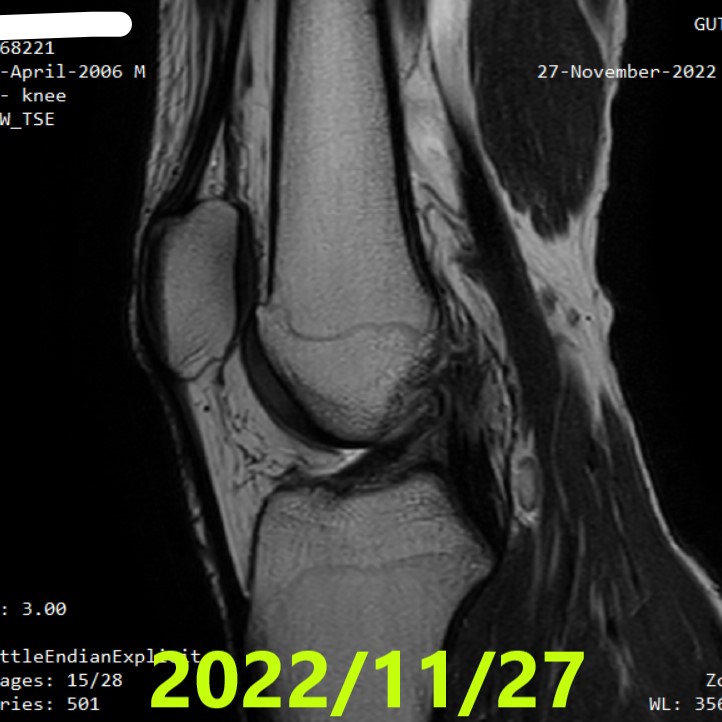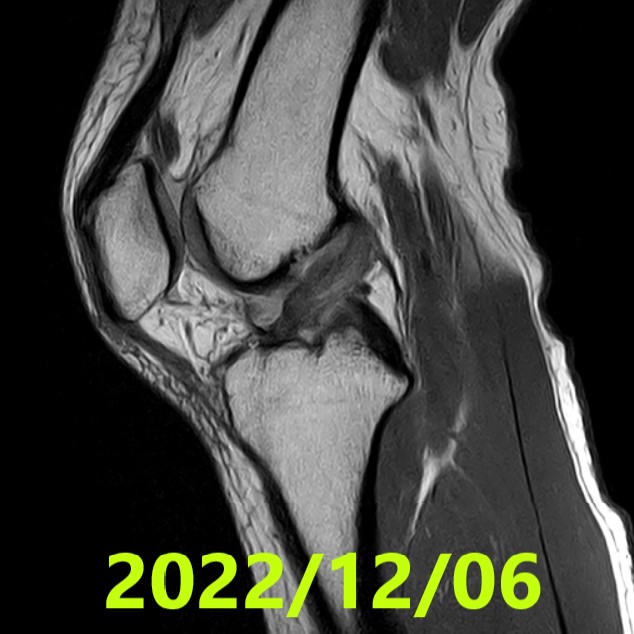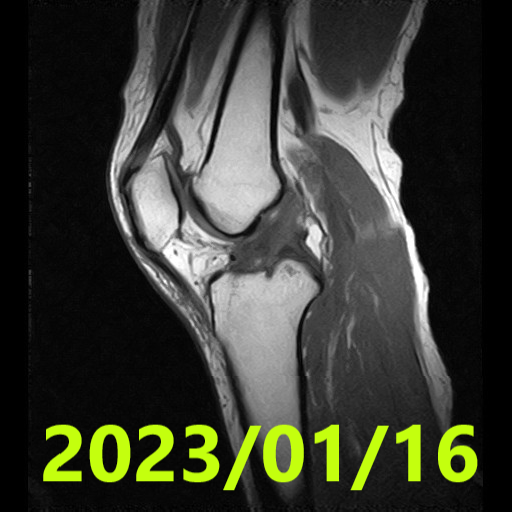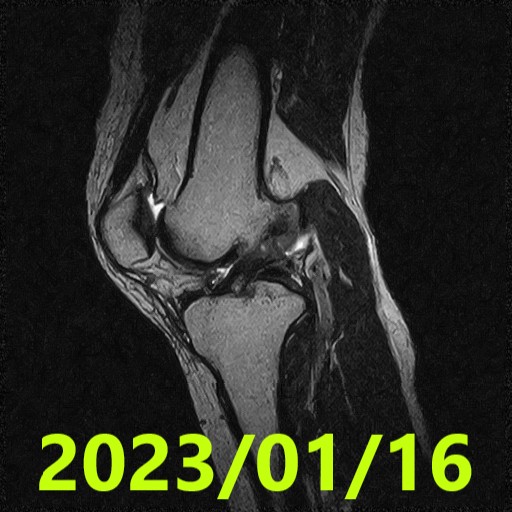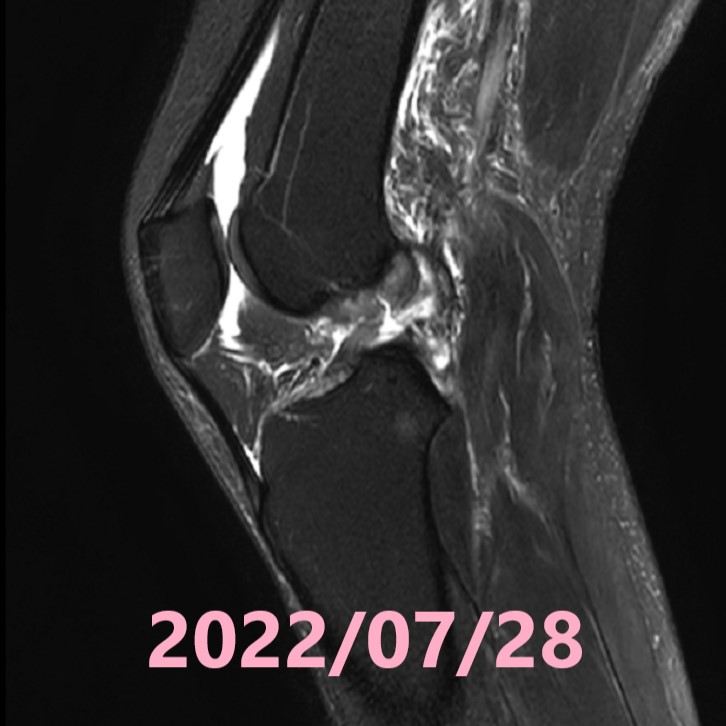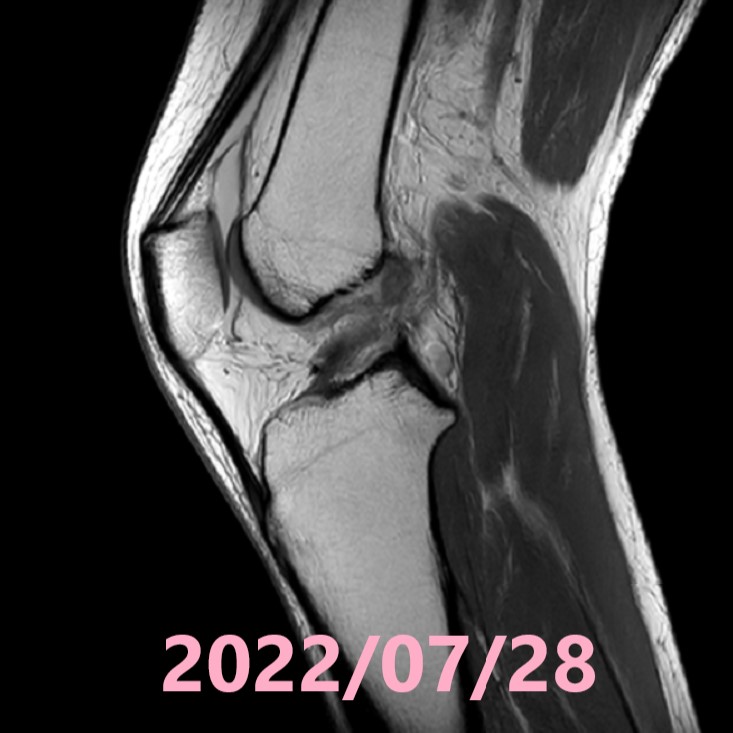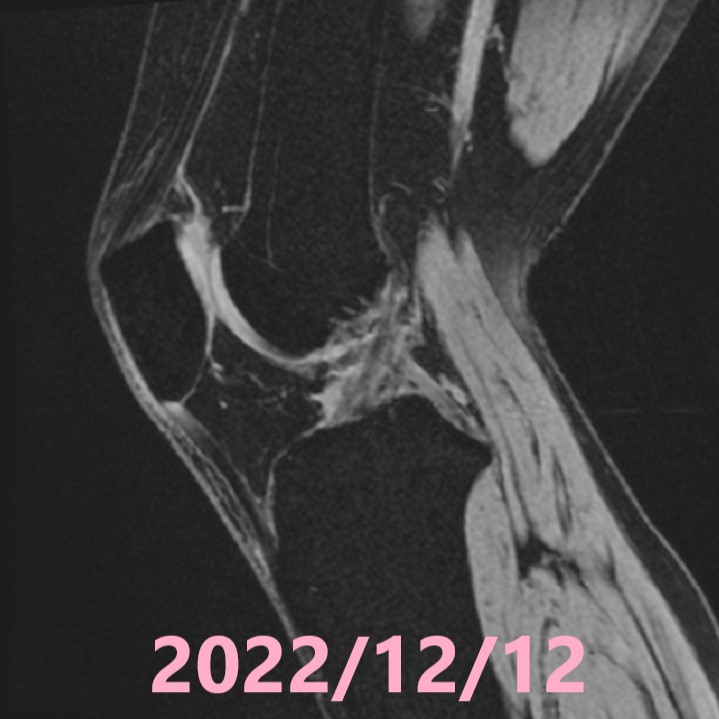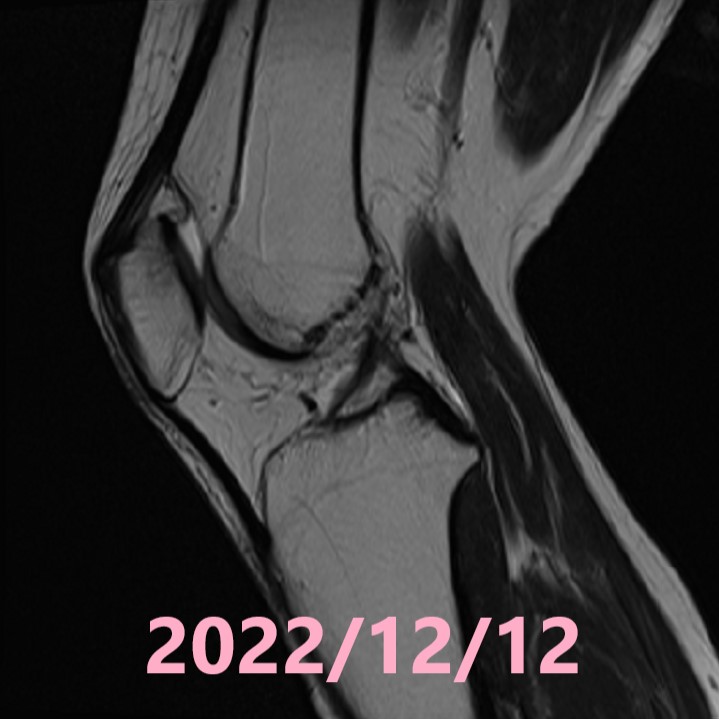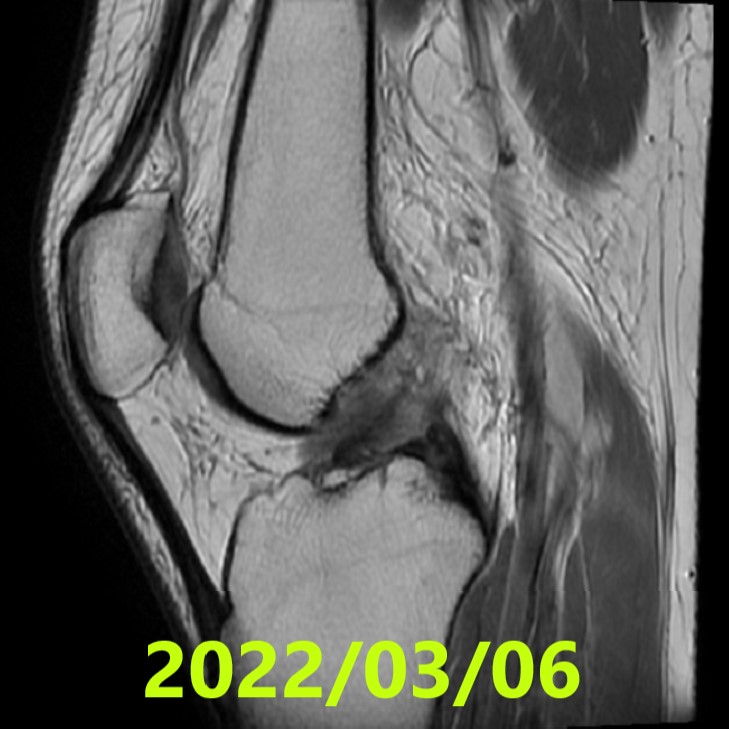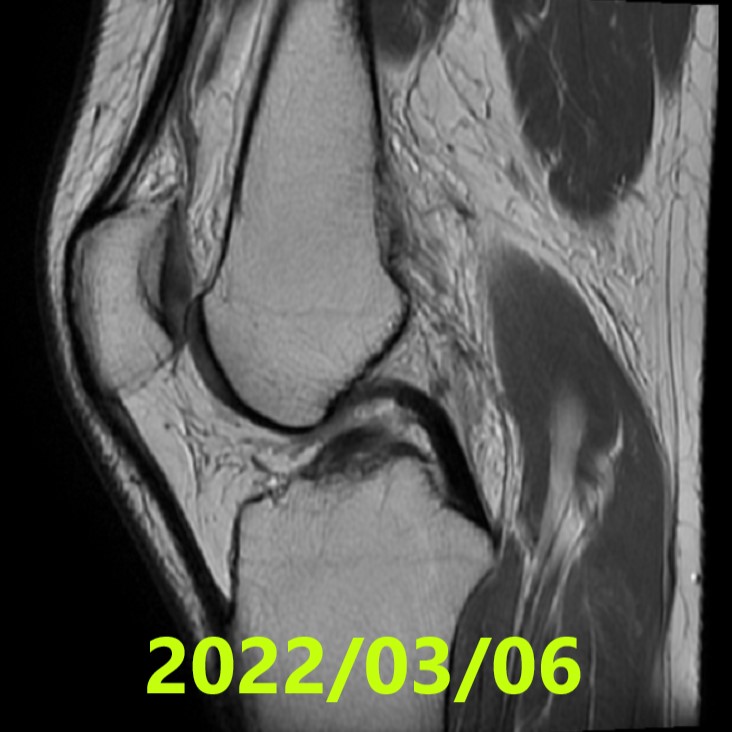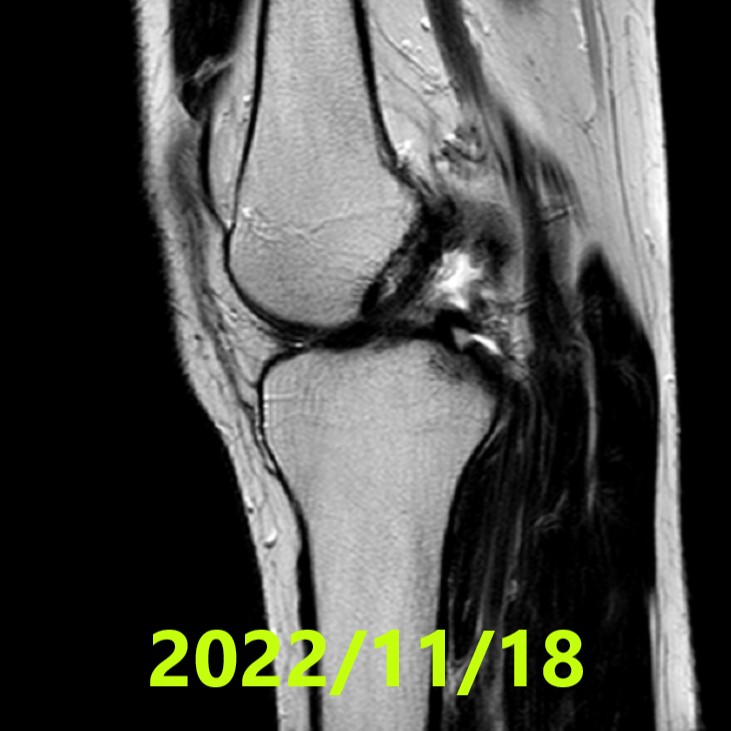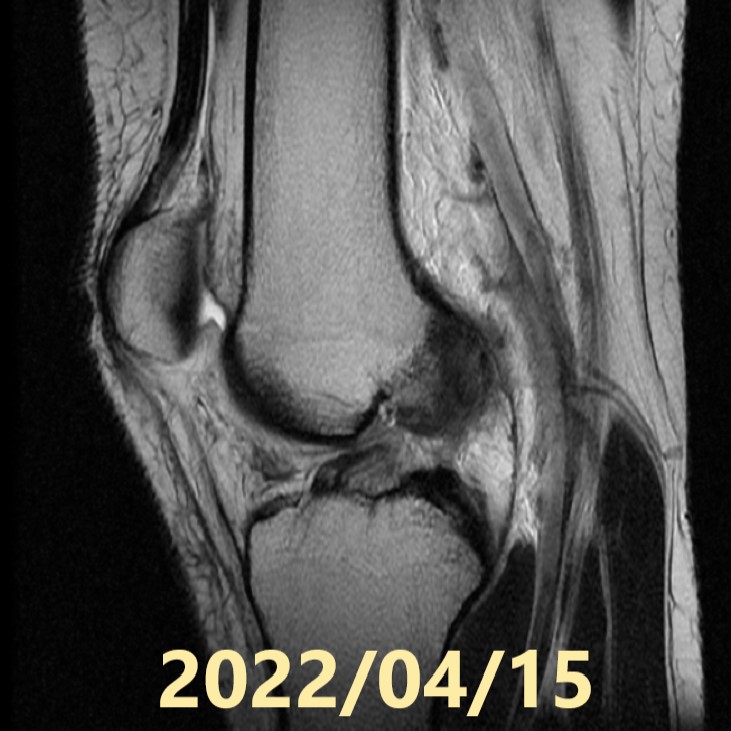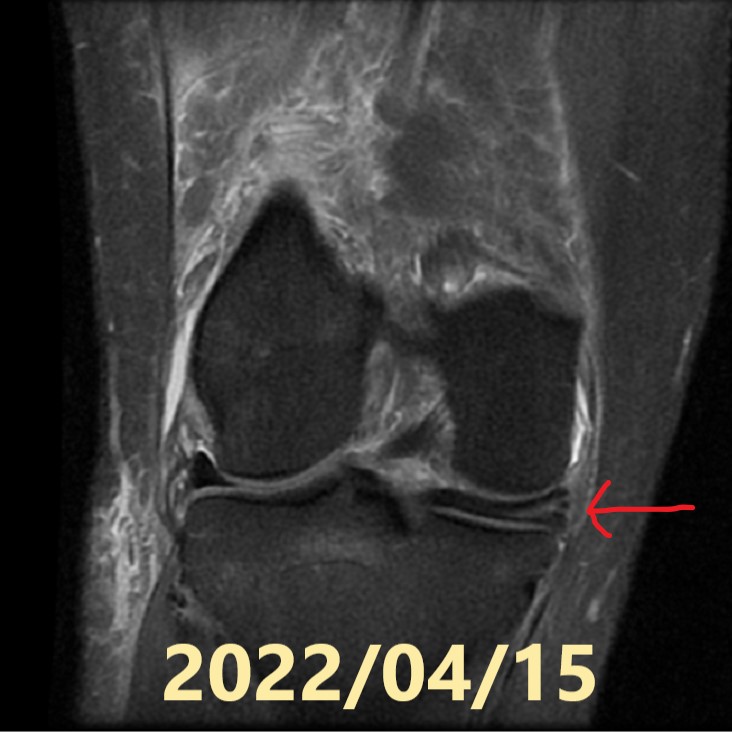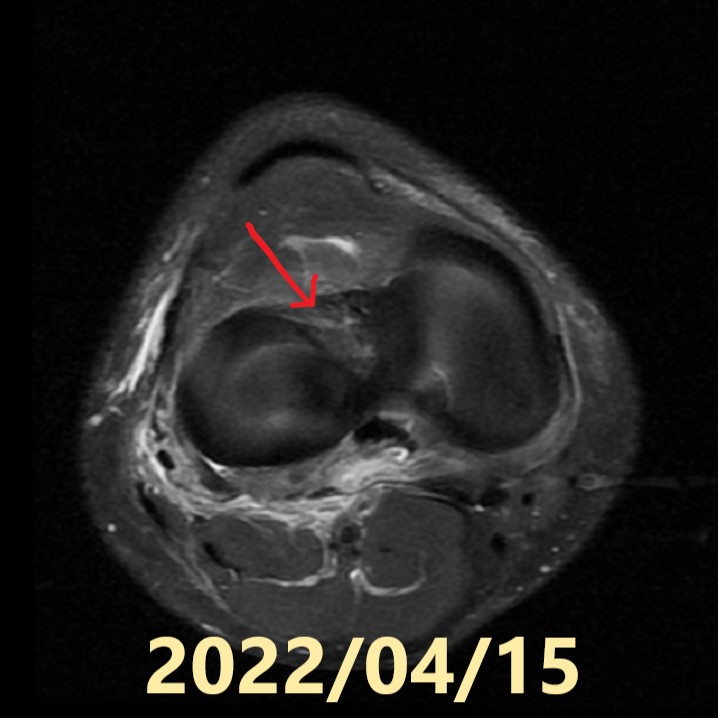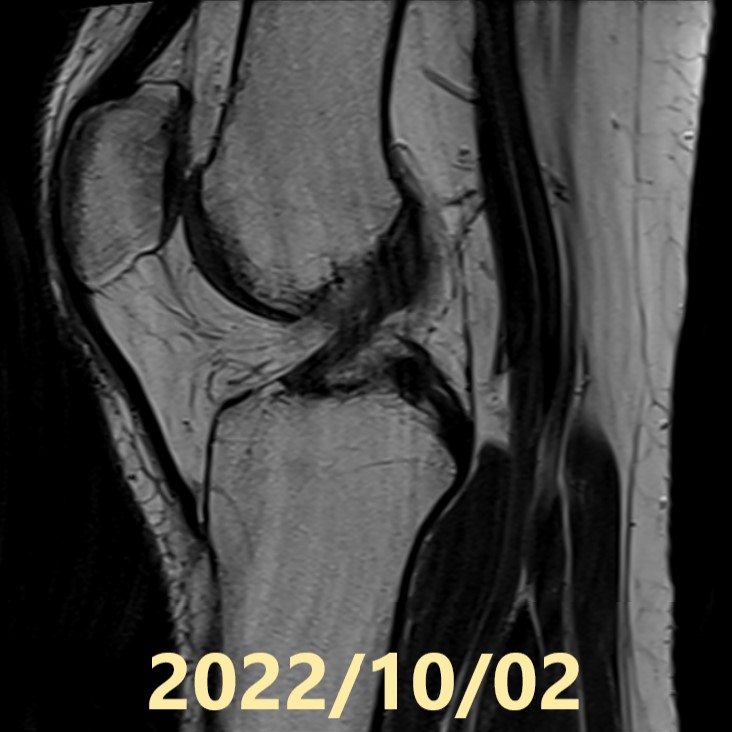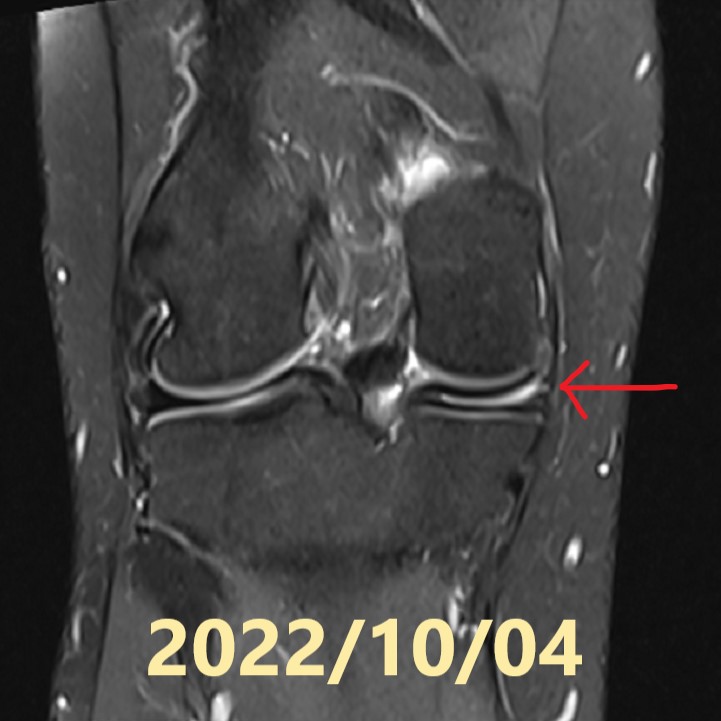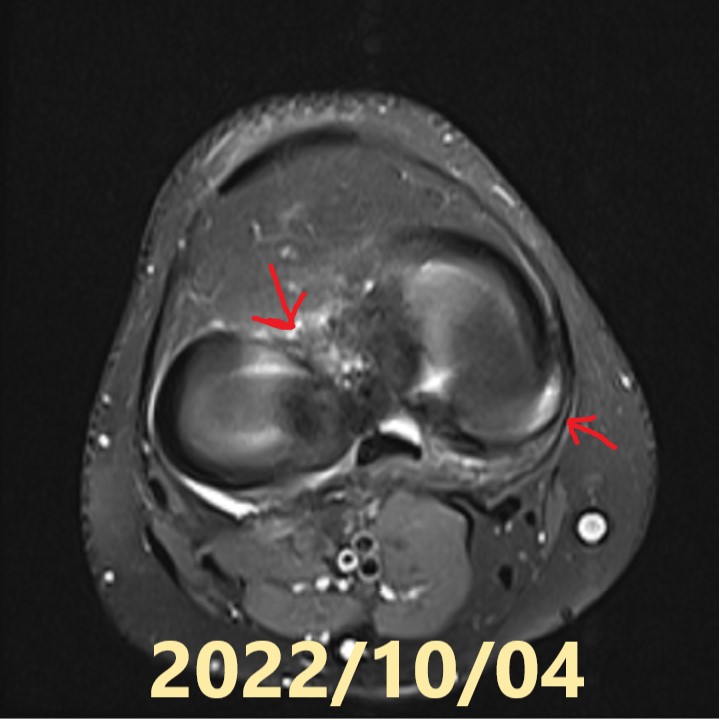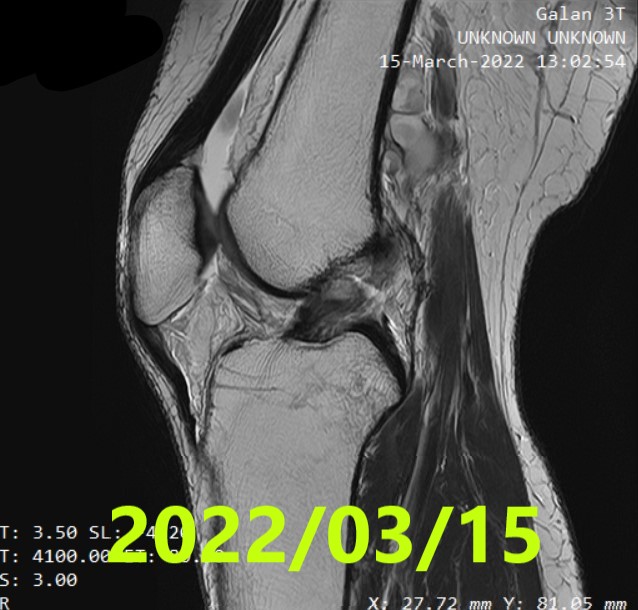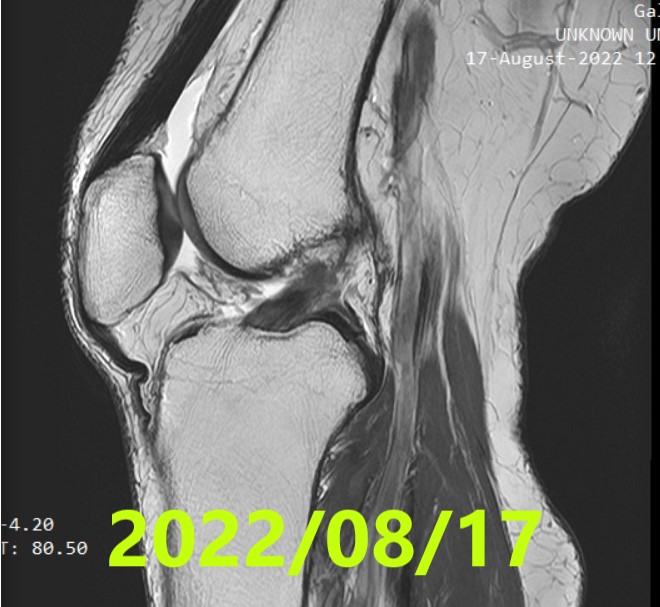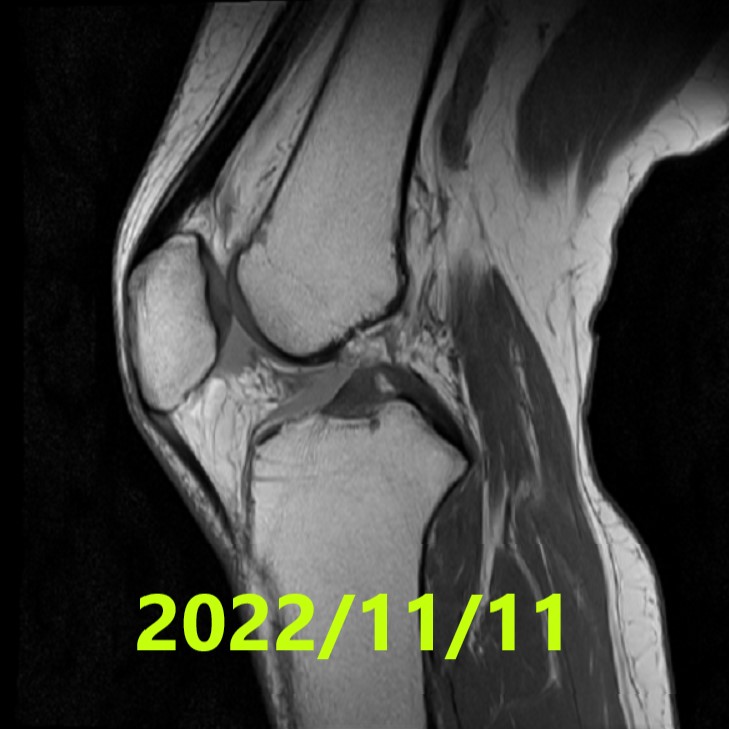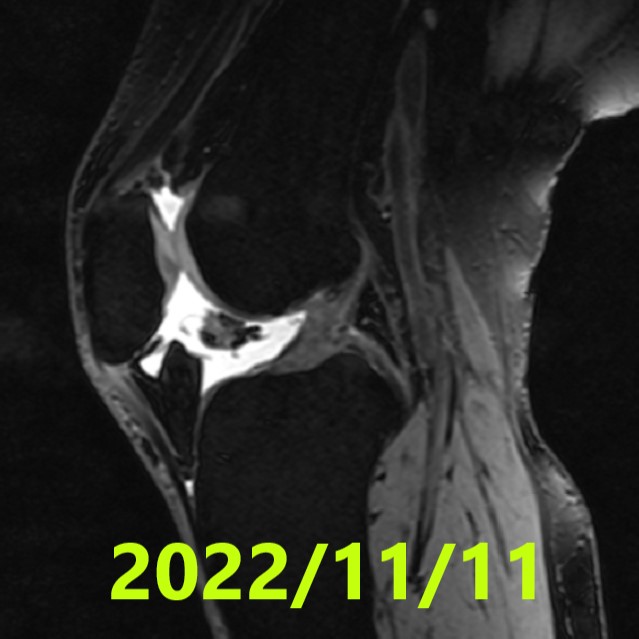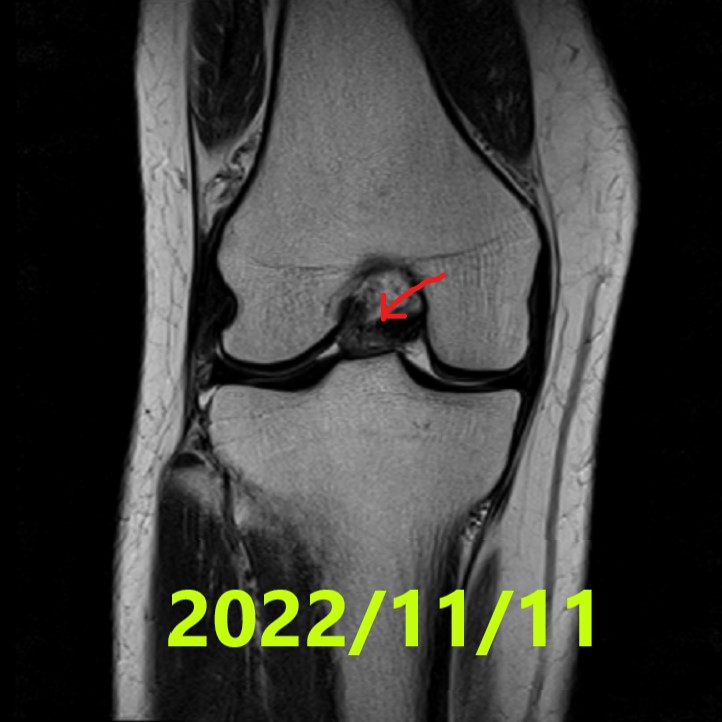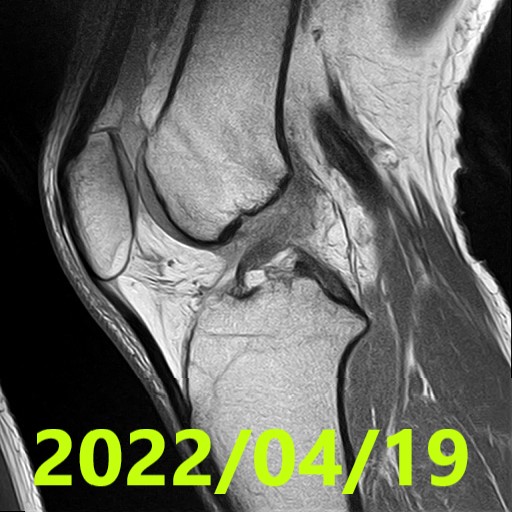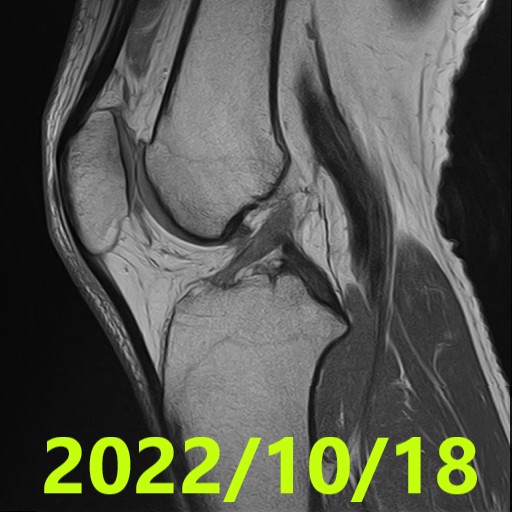ACL Online Therapy for natural healing
The case reports of ACL natural healing
Patient information:
46 years old, female, Hungarian
Mechanism of injury:
On January 6, 2023, while skiing downhill, she fell on an ice slope and fell down. She was unable to stand up and she was rescued by rescue teams.
Progress after injury:
She returned to Hungary from Slovakia, where she consulted an orthopedic surgeon. She had her joint fluid removed by arthrocentesis. She had an MRI done on January 9th, and she received the following diagnosis.
Complete ACL tear (displaced stump (Ihara classification III))
Medial collateral ligament injury
Lateral collateral ligament injury
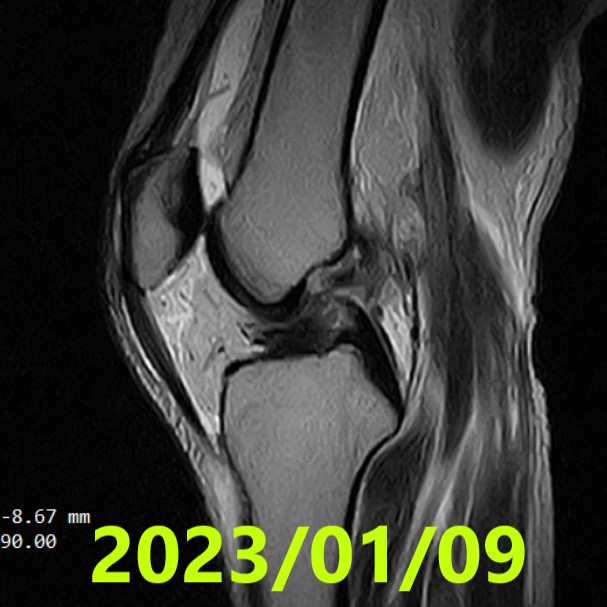
On January 16th, she visited the orthopedic surgeon again. The Lachman test was positive. She then began range of motion exercises, including full knee extension.
On January 20th, she started online therapy with Jun Matsumoto and began Evo-Devo Exercises.
On February 17th, she had another MRI scan. The images were taken with the knee fully extended. The latest MRI images did not confirm her spontaneous recovery. In fact, the distance between the stumps had widened and worsened. The tibial stump remained in a displaced position and had not improved.
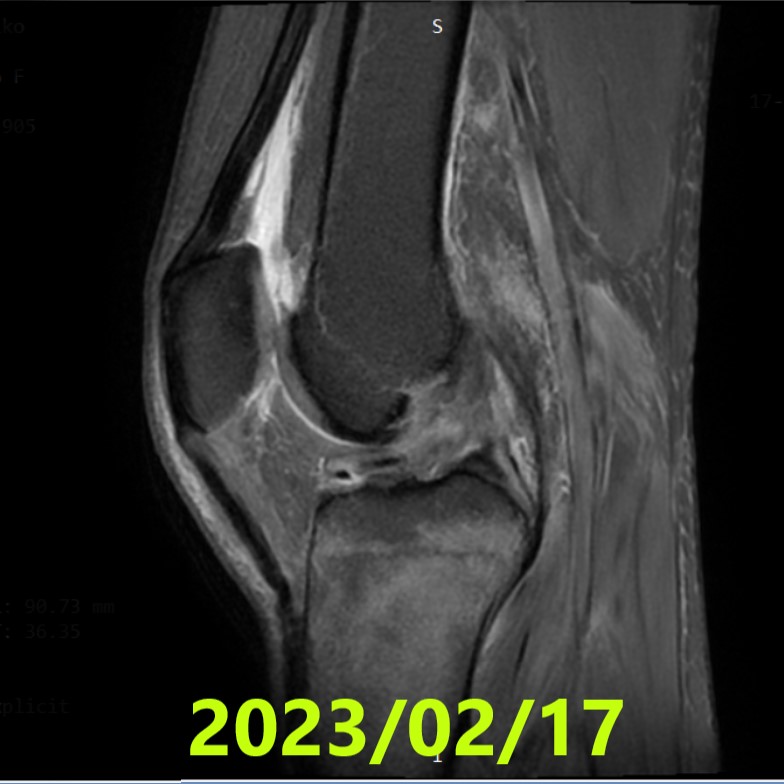
After that, she continued Evo-Devo Exercises and had a third MRI scan on May 18th.
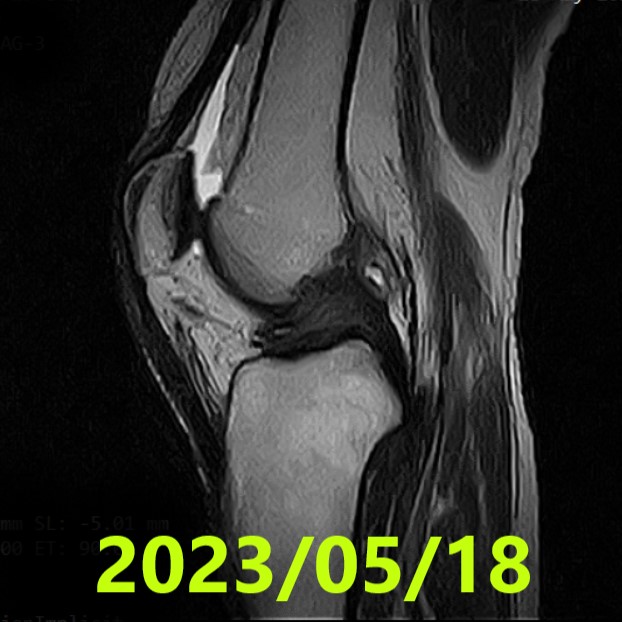
Spontaneous recovery was not confirmed in this MRI scan, but the Lachman test conducted by the doctor showed negative result. She then discontinued Evo-Devo Exercises and started physical therapy in Hungary. On September 18th, her fourth MRI was performed.
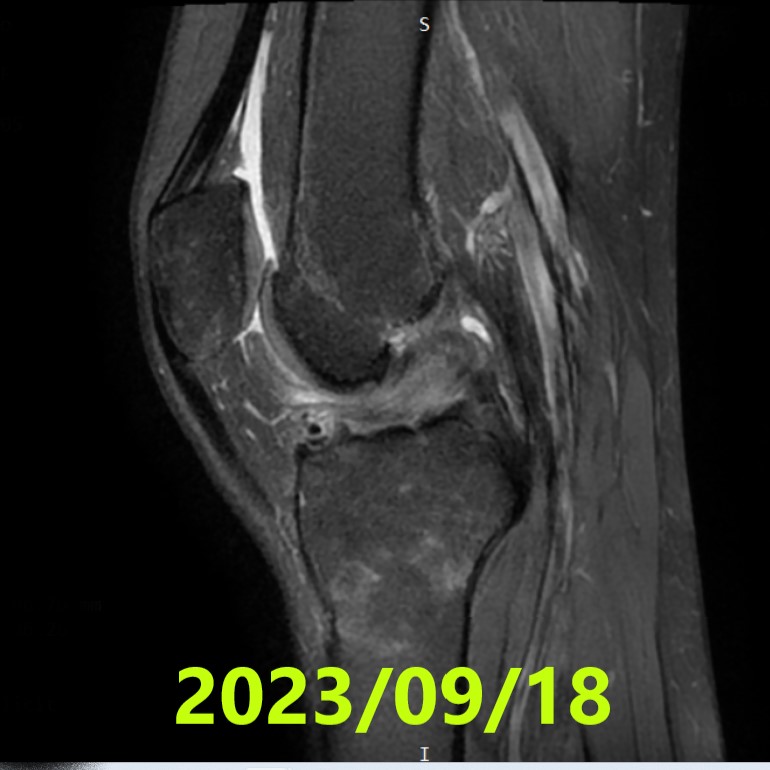
This MRI showed no major changes. The patient had limited range of motion in his right knee and had residual knee dysfunction. He is continuing exercise therapy to improve his functional impairment. The fifth MRI was performed on February 27, 2024.
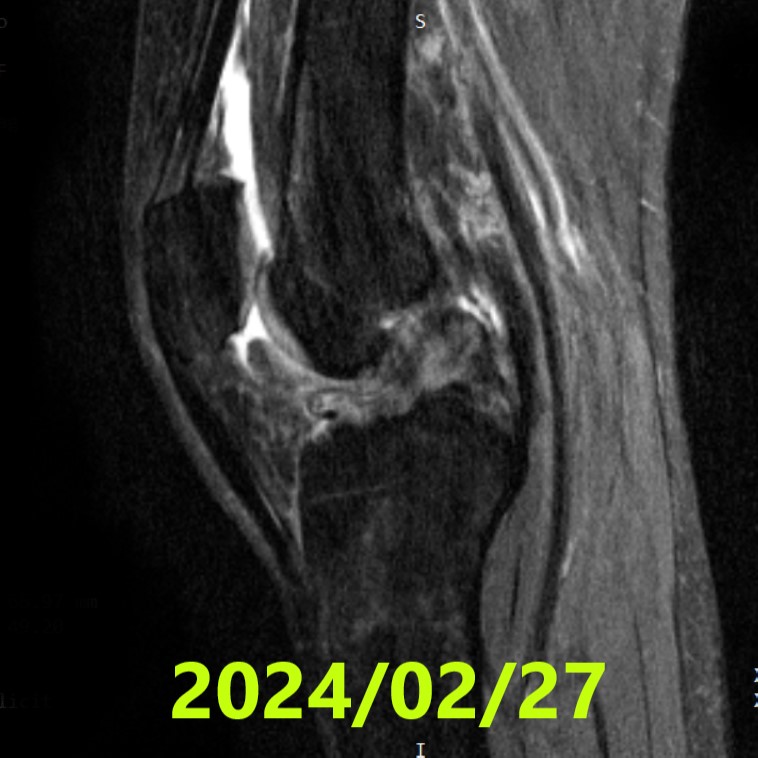
The diagnostic imaging specialist’s report determined that the ACL was torn, but that some of the fibers were still connected. Although the patient is able to lead a normal daily life, she still has limited range of motion in his right knee and is currently undergoing physical therapy.
Consideration:
In this case, not only did the torn ACL not heal well, but there was still clear functional impairment, and natural healing could be said to have failed. There are four possible causes of failure. The first is that the distal end of the stum had turned over, making it difficult for it to heal naturally. Second, blood had been removed by arthrocentesis. Third, physical therapy including full extension was performed early after the injury. Fourth, a second MRI was taken in the fully extended position early after the injury. Based on these results, we would like to strive to improve future treatment methods.
References:
- Ihara H, Miwa M, Deya K, Torisu K. MRI of anterior cruciate ligament healing. J Comput Assist Tomogr. 1996 Mar-Apr;20(2):317-21. doi
- Ihara H, Kawano T. Influence of Age on Healing Capacity of Acute Tears of the Anterior Cruciate Ligament Based on Magnetic Resonance Imaging Assessment. J Comput Assist Tomogr. 2017 Mar/Apr;41(2):206-211. doi
- Pitsillides A, Stasinopoulos D, Giannakou K. Healing potential of the anterior cruciate ligament in terms of fiber continuity after a complete rupture: A systematic review. J Bodyw Mov Ther. 2021 Oct;28:246-254. doi
- Filbay, Stephanie R et al. “Healing of acute anterior cruciate ligament rupture on MRI and outcomes following non-surgical management with the Cross Bracing Protocol.” British journal of sports medicine, bjsports-2023-106931. 14 Jun. 2023, doi:10.1136/bjsports-2023-106931
